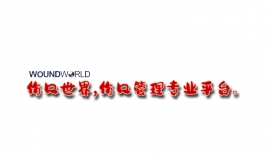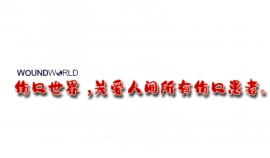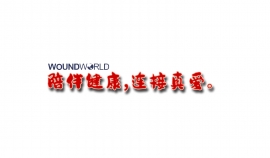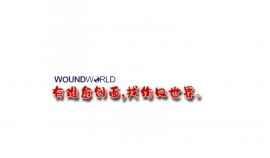
伤口世界

- 星期一, 23 9月 2024
茶叶预防衰老及衰老相关疾病研究进展
戴申,鹿颜,余鹏辉,龚雨顺*,刘仲华*
湖南农业大学园艺园林学院,国家植物功能成分利用工程技术研究中心,茶学教育部重点实验室,湖南 长沙 410128
摘要:综述了茶叶及其主要功能成分茶多酚、茶氨酸和咖啡碱对秀丽线虫、果蝇及老鼠等多种模式生物的抗衰老作用;概述了茶叶预防衰老相关疾病的保健功能;阐述了茶叶通过调节能量感应网络延缓衰老的研究现状;简单讨论了今后茶叶抗衰老研究的方向。
关键词:茶;抗衰老;能量感应网络
中图分类号:S571.1 文献标识码:A 文章编号:1000-369X(2019)01-023-11
Research Progress of The Preventing Effects of Tea on Aging and Aged-related Pathologies
DAI Shen, LU Yan, YU Penghui, GONG Yushun*, LIU Zhonghua*
Hunan Agriculture University, College of Horticulture and Landscape, National Engineering Center of Plant Functional Components Utilization, Key Lab of Tea Science, Changsha 410128, China
Abstract: In this paper, the anti-aging effects of tea in model organisms such as Caenorhabditis elegans, Drosophila flies and mice were reviewed. The main functional components (tea polyphenols, theanine and caffeine) were especially emphasized. The beneficial functions of tea in preventing age-related diseases were summarized. Furthermore, the latest research on its mechanism of regulating the nutrient-sensing signaling networks was expounded. Finally, the future research direction was briefly discussed.
Keywords: tea, anti-aging, nutrient-sensing signaling networks
收稿日期:2018-08-27 修订日期:2018-09-20
基金项目:湖南省自然科学基金(No. 2018JJ2161)
作者简介:戴申,女,硕士研究生,主要从事茶叶功能成分化学研究。*通信作者:该Email地址已收到反垃圾邮件插件保护。要显示它您需要在浏览器中启用JavaScript。,该Email地址已收到反垃圾邮件插件保护。要显示它您需要在浏览器中启用JavaScript。

- 星期五, 20 9月 2024
Diabetes remission in the real world
Pam Brown
GP in Swansea
Citation: Brown P (2024) Diabetes Distilled: Diabetes remission in the real world. Diabetes & Primary Care 26: 145–7
Diabetes remission is achievable at scale in the real world, according to early results from the NHS Type 2 Diabetes Path to Remission programme published in Lancet Diabetes & Endocrinology. Of 7540 people referred to the programme between September 2020 and December 2022, a total of 1740 started the total diet replacement section of the programme before January 2022, and 960 (55%) completed the programme. Mean weight loss for the 1710 who started the programme and had follow-up data available was 9.4 kg (8.3%), with a mean weight loss of 10.3 kg (9.3%) among the 945 who completed the programme. Amongst the 945 who completed the programme and had two HbA1c measurements, 32% achieved remission, with mean weight loss of 15.9 kg (14.4%), while overall 27% of those who started the programme achieved remission regardless of whether they completed. Remission rates are lower than in trials such as DiRECT and DIADEM-I, despite similar levels of weight loss. The authors highlight that an additional 17% of participants met the HbA1c targets for remission but continued on metformin and may otherwise have achieved remission. These early results confirm that type 2 diabetes remission is indeed possible at scale in the real world, outside of clinical trials.

- 星期四, 19 9月 2024
Impact of metformin timing on glucose and GLP-1 response
Pam Brown GP in Swansea
Citation: Brown P (2024) Diabetes Distilled: Impact of metformin timing on glucose and GLP-1 response. Diabetes & Primary Care 26: 143–4
Glucose-lowering effects in response to normal-release metformin are greater when the drug is given 30 or 60 minutes before, rather than with, food, according to this small study in people with well-controlled type 2 diabetes published in Diabetologia. Endogenous GLP-1 secretion increased when metformin 1000 mg was given 30 or 60 minutes prior to a glucose infusion, whereas there was no increase when the metformin was administered at the same time as the glucose. The results suggest that, if tolerated, administering standard release metformin before meals may lead to improved postprandial glycaemic control.

- 星期三, 18 9月 2024
The importance of getting the correct diabetes diagnosis
Jane Diggle Specialist Diabetes Nurse Practitioner, West Yorkshire
Citation: Diggle J (2024) The importance of getting the correct diabetes diagnosis. Diabetes & Primary Care 26: 111–2

- 星期六, 14 9月 2024
Split-thickness skin graft and intralesional epidermal growth factor for patients with diabetic foot wounds
Bulent M Ertugrul, Saime Irkoren, Ender Ceylan and Oner Savk
Split thickness skin grafting (STSG) is a simple surgical technique in wound reconstruction, but various factors including inadequate wound bed preparation may cause partial or total graft loss. Ensuring infection-free healthy granulation tissue is essential before operation. Epidermal growth factor (EGF) has a critical role in angiogenesis and formation of healthy granulation tissue. This study retrospectively investigated the value of intralesional EGF in patients with a chronic foot ulcer due to diabetes who underwent reconstruction with an autologous skin graft. Patients treated with intralesional EGF had a higher rate of graft survival, significantly fewer postoperative complications and reduced hospitalisation times. These results suggest we should undertake a need prospective study of this issue with a larger case series.
Citation: Ertugrul BM, Irkoren S, Ceylan E, Savk O (2024) Split thickness skin graft and intralesional epidermal growth factor for patients with diabetic foot wounds. The Diabetic Foot Journal 27(1): 34–9
Key words
- Diabetic foot
- Epidermal growth factor
- Skin graft
- Wound treatment
Article points
1. Healthy granulation tissue is essential to the success of split-thickness skin grafting
2. Epidermal growth factor (EGF) has a critical role in the angiogenesis and formation of healthy granulation tissue
3. Patients with diabetic foot ulcers treated with EGF had a higher rate of graft survival.
Authors
Bulent M Ertugrul MD is Professor of Infectious Diseases and Clinical Microbiology, University of Adnan Menderes School of Medicine, Aydin, Turkey; Saime Irkoren MD is Associate Professor of Plastic, Reconstructive and Esthetic Surgery, University of Adnan Menderes School of Medicine, Aydin, Turkey; Ender Ceylan MD is Assistant Professor of Plastic, Reconstructive and Esthetic Surgery, University of Adnan Menderes School of Medicine, Aydin, Turkey; Oner Savk MD is Professor of Orthopedics and Traumatology, University of Adnan Menderes School of Medicine, Aydin, Turkey

- 星期五, 13 9月 2024
Hypertension case finding and treatment to target as part of the NHS diabetes eye screening programme
Suneeta Kochhar, Marcia Excell
This article reviews a service pathway offering people attending their diabetes eye screening appointments an opportunistic blood pressure check to support hypertension case finding and treatment to target. The pathway promotes patient choice and facilitates primary and secondary care collaboration, as well as utilisation of home blood pressure readings. From the 200 participants in the study, 91 (45.5%) had clinic blood pressure readings above 140/90 mmHg, of whom 48 agreed to undertake home blood pressure monitoring. Of those, 33 individuals had elevated home blood pressure readings – 13 with newly diagnosed hypertension and 20 requiring treatment to target of their pre-existing hypertension. All 33 were contacted to ensure that they had been followed up by their GP practice. Participant feedback was positive.
Citation: Kochhar S, Excell M (2024) Hypertension case finding and treatment to target as part of the NHS diabetes eye screening programme. Diabetes & Primary Care 26: [Early view publication]
Article points
1. People attending their diabetes eye screening appointments may be offered an opportunistic blood pressure check to support case finding and treatment to target of hypertension.
2. Pathways for raised blood pressure may utilise home blood pressure readings to facilitate supported self-management.
3. Interface working with community providers/secondary care and primary care providers may result in early treatment of hypertension, and treatment to target is known to improve cardiovascular outcomes especially in people with diabetes.
Key words
– Cardiovascular disease
– Hypertension
– Service delivery
Authors
Suneeta Kochhar, GP Principal and Clinical Lead for CVD Prevention, NHS Sussex; Marcia Excell, RN, East Sussex Healthcare NHS Trust, and Chief Nurse Fellow, University Hospitals Sussex NHS Foundation Trust.
